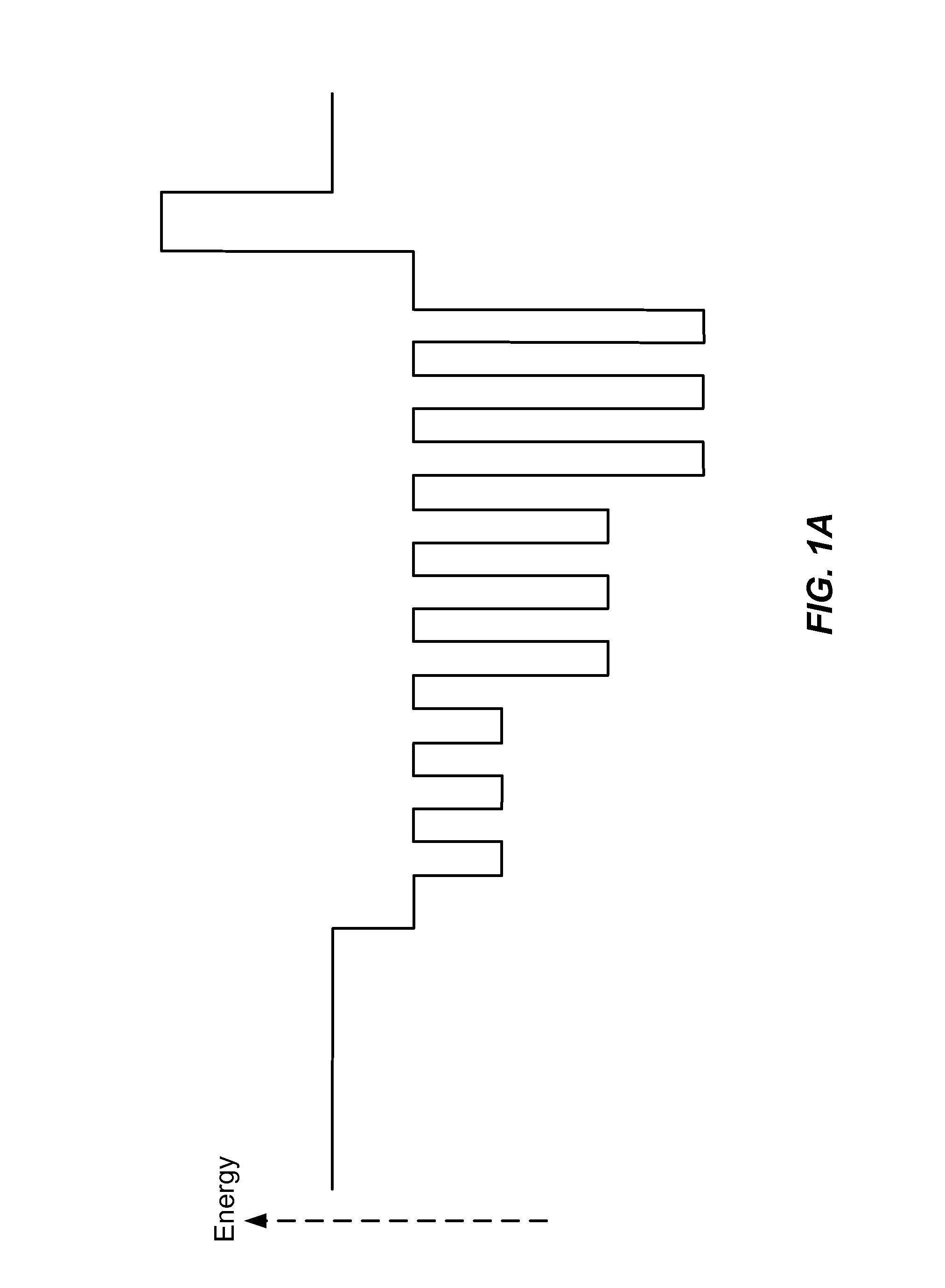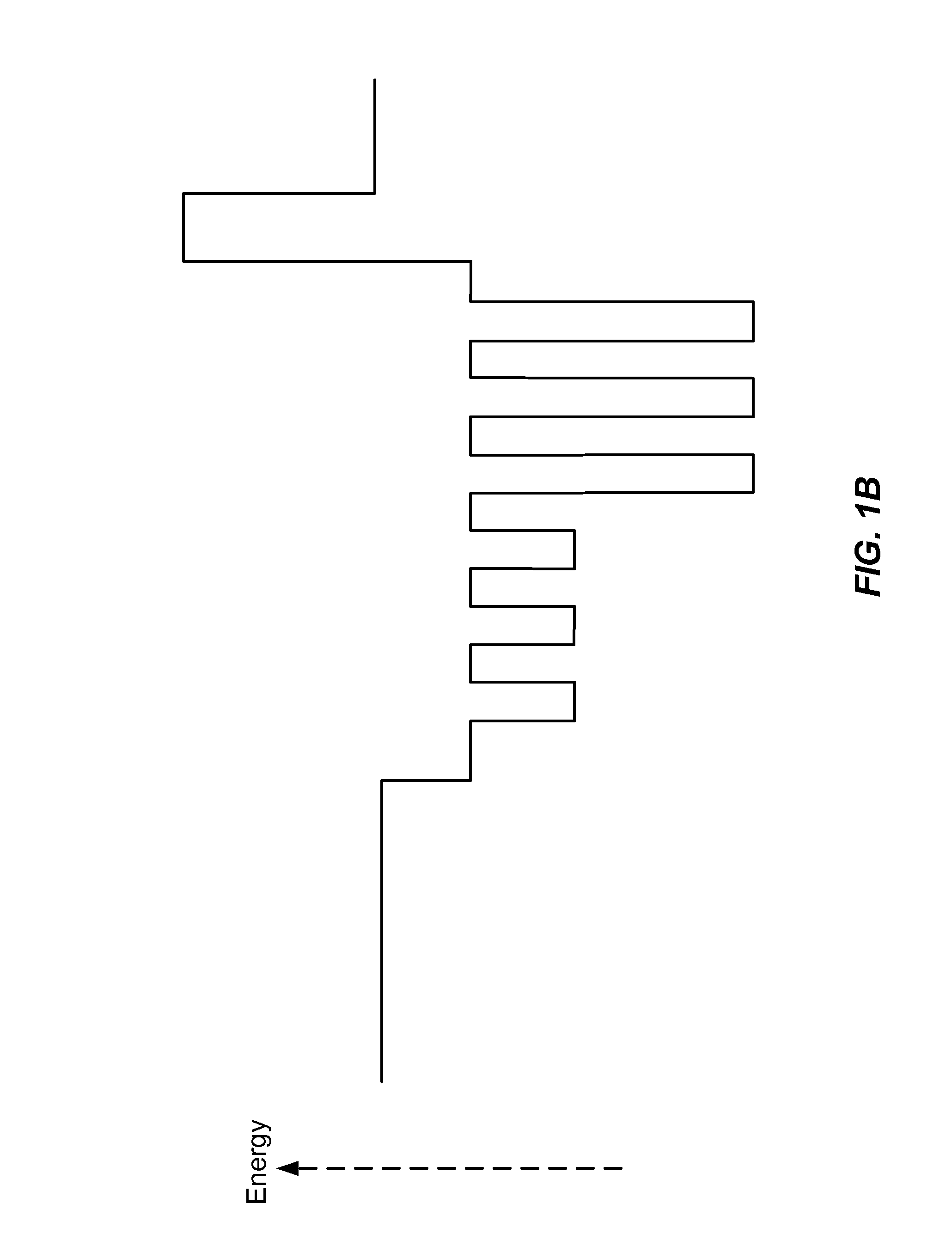Multi color active regions for white light emitting diode
- Summary
- Abstract
- Description
- Claims
- Application Information
AI Technical Summary
Benefits of technology
Problems solved by technology
Method used
Image
Examples
Embodiment Construction
[0021]In a specific embodiment, the present invention includes a single growth epitaxial structure containing active layers that emit red, green, and blue radiation, or red, green, yellow, and blue radiation, or blue and yellow radiation from the same layer stack resulting in white light emission. The epitaxial structure is fabricated into an LED that emits white light without the need for a phosphor. See, for example, FIGS. 1A, 1B, and 1C and FIGS. 2A and 2B.
[0022]In a specific embodiment, the light emitting layers are formed from InGaN in which the indium content dictates the emission wavelength. The InGaN light emitting layers may be quantum wells separated by quantum barriers or may be double hetereostructures type emitting layers.
[0023]The emitting layers can be contained within the same p-i-n junction such that adjacent layers can be emitting different colors. Such a configuration would lead to an ideal diode turn-on voltage equal to the largest bandgap of the emitting layers....
PUM
 Login to View More
Login to View More Abstract
Description
Claims
Application Information
 Login to View More
Login to View More - R&D
- Intellectual Property
- Life Sciences
- Materials
- Tech Scout
- Unparalleled Data Quality
- Higher Quality Content
- 60% Fewer Hallucinations
Browse by: Latest US Patents, China's latest patents, Technical Efficacy Thesaurus, Application Domain, Technology Topic, Popular Technical Reports.
© 2025 PatSnap. All rights reserved.Legal|Privacy policy|Modern Slavery Act Transparency Statement|Sitemap|About US| Contact US: help@patsnap.com



